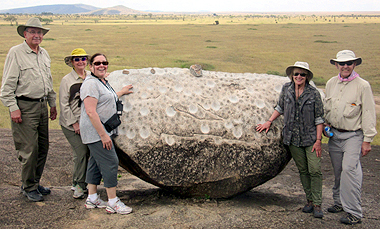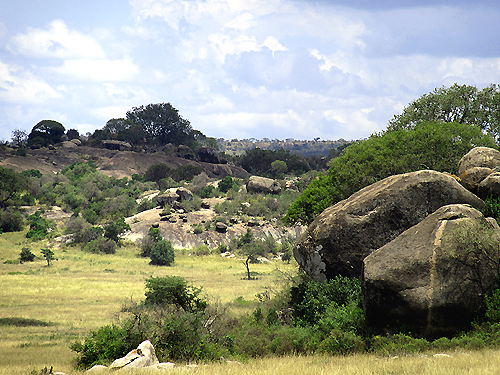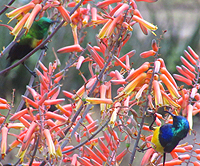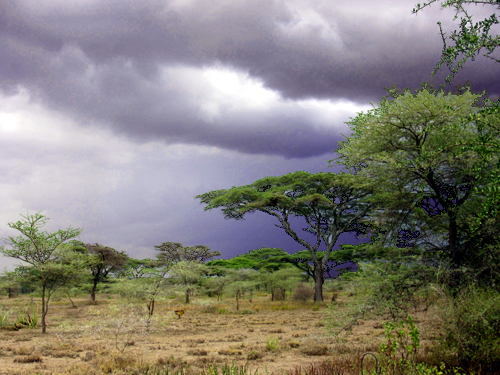
According to Mark Weingarden we saw 283,465 wildebeest in a long narrow area that we traversed of about 20 sq. miles. Mark’s metric was to estimate how many northeast football stadiums would be filled by the herds.
No one suggested we go where we found them. Virtually all the information we had collected for days, combined with internet sites like Herdtracker.com, gave us no help. We were the only car for four hours on the Soroi Lodge access road off the western corridor road.
We had left the western corridor after finding no wildebeest in the Masabi Plains where they had been reported over the last few days. If they had been there, they’d left in a hurry.
Giant storms were building. The veld all along the western corridor from Serena past the Masabi Plains looked green enough with good enough grass to support large herds, but we saw none.
We took side roads like down to the Hembe and Mauri camp sites. It was beautiful and fresh and we saw topi and impala, warthog, tons of gazelle, baboon and even a group of more than 100 eland.
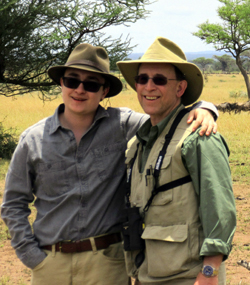
On our side roads down to the Grumeti River it was depressing. The river is ridiculously low, so it was clear the greened up veld was from recent rains. At the Grumeti Retina hippo pool later we’d see two dead hippo, one being devoured by giant crocs. Perhaps that’s why we got to see the very rare white-headed vulture … because there is so much dead carion.
The afternoon before we had seen maybe a thousand zebra on the plains in front of Makona Hill, and Tumaini and I conjectured that if they were in vanguard of something, it would be in the pass that led from Soroi to Seronera.
We would have liked to take that little track, but it was too wet. That has been the great irony of the last few days: no wilde, stressed and sick animals, but a greened up veld. About six weeks of hardly any rain was breaking and confusing everyone, perhaps including the wilde.
So after following all the public leads and coming up zero, we headed back to the Soroi access road. I wasn’t optimistic. I told my clients that it didn’t look good.
I was wrong.
Estimating wildebeest numbers is not easy, and it’s even harder when they aren’t spread across flat grassland plains, but woven among many forests and valleys. But I think Dave may be close to the numbers. I think we probably encountered 10-15% of the entire population.
Even sitting on a rise in the great plains it’s hard to see any more at once, so we lucked out … we found the great migration.
If I’m right about the numbers, where are the rest?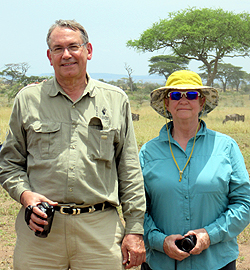
I remain convinced that the dramatically unusual weather has fractured the herds this year. Likely most of “the rest” is in as small or smaller groups scattered all over the place. That would be a natural and positive reaction to near drought.
But now that the drought seems to have ended the herd mentality may kick back in gear. They aren’t in the best of condition. Instead of the normal 1 in 4/5 wilde being babies, I reckon it’s not more than 1 in 10. Have they died already?
We saw two groups with young that still had their umbilical chords. That means very late births. Many herbivores have the capacity to delay birth for at least a little while. Perhaps that’s what’s happening.
The big question now is where will they go. If they came from Masabi in the western corridor they were several months ahead of a normal schedule. We left Ndutu several days ago and it was raining hard there.
This afternoon it’s very hard raining where we are in Seronera, and storms filled the sky from horizon to horizon. Grass will be growing everywhere.
But it is the specially high nutrient grasses of the southern plains that the herd needs for a healthy year. Will they go back to that? Or are they too weak or tired?
I’ve got one more safari to go. Stay tuned!

